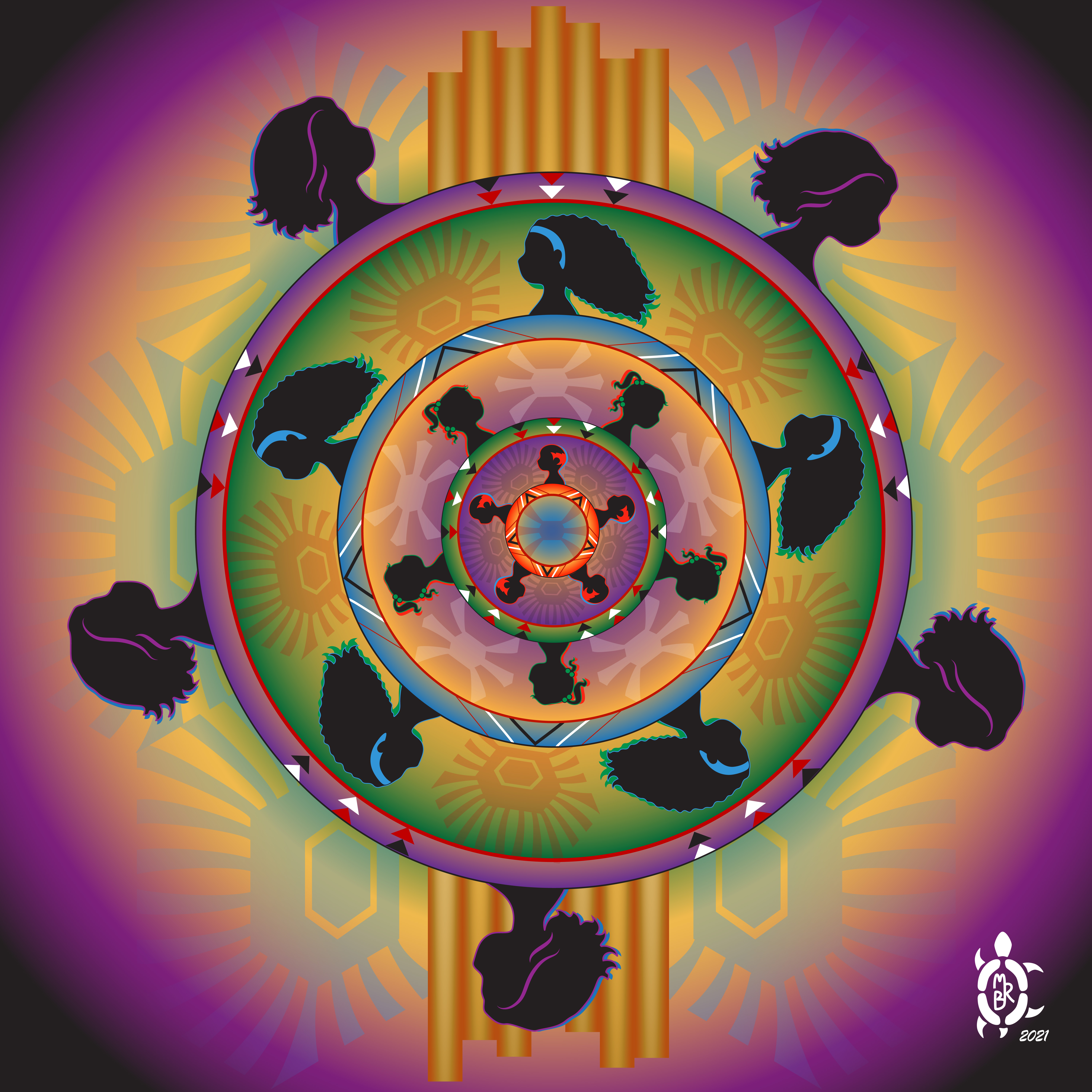National Museum of the American Indian To Launch “Ancestors Know Who We Are” June 15

Monica Rickert-Bolter (Prairie Band Potawatomi, Black, and German, b. 1986) Hair Stories, 2021. Digital painting. Photo by the artist.
The Smithsonian’s National Museum of the American Indian will launch the digital exhibition “Ancestors Know Who We Are” June 15. The exhibition features works by six contemporary Black-Indigenous women artists that address issues of race, gender, multiracial identity and intergenerational knowledge.
The artists featured in the exhibition are:
- Rodslen Brown (1960–2020) was a basket maker who specialized in round reed, flat reed and honeysuckle baskets. She was a citizen of Cherokee Nation who advocated for citizenship for Freedman descendants like herself.
- Joelle Joyner is an illustrator and graphic designer whose art is inspired by her African American and Kauwets’a:ka (Meherrin Indian Nation) heritage.
- Moira Pernambuco is an environmental and street and studio portrait photographer from Guyana. Her art reflects her African and Amerindian (Wapishana) heritage.
- Paige Pettibon is a multidisciplinary artist of Black, Salish and white descent. Her artistic practice represents her diverse background and amplifies the voices of people in her community.
- Monica Rickert-Bolter is a visual artist and journalist who uses traditional and digital mediums in her work. She is of Black and German descent and a citizen of the Prairie Band of Potawatomi Nation.
- Storme Webber is a two-spirit poet and interdisciplinary artist who is descended from Black and Alaskan Sugpiaq (Alutiiq) women. Her work engages with ideas about history, lineage, gender, race and sexuality, using text, performance, audio and altar installations, and archival photographs.
“The women featured in this exhibition powerfully tell their stories through the art they created,” said Cynthia Chavez Lamar (San Felipe Pueblo, Hopi, Tewa and Navajo), director of the National Museum of the American Indian. “As a museum, it’s important we share the perspectives of Indigenous women to provide insight into their diverse experiences through exhibitions like this as well as our programs.”
In addition to the works of art, the exhibition also features artist interviews and writings from Black and Black-Indigenous scholars in the fields of history, gender studies, art history and education. Often written in the first person, these short essays address the themes of the exhibition.
“The exhibition moves beyond the idea of the ‘Native experience’ or the ‘Black experience’ to highlight how gender and mixed-race identity informs art and creative expression,” said curator Anya Montiel (Mexican and Tohono O’odham descent). “These artists have unique perspectives and voices that speak to our current moment as a nation.”
The exhibition’s title is taken from a letterpress print by Webber. It was her response to being told she was not Black enough or Native enough.
This project received support from the Smithsonian American Women’s History Initiative.
About the Museum
In partnership with Native peoples and their allies, the National Museum of the American Indian fosters a richer shared human experience through a more informed understanding of Native peoples. The museum strives toward equity and social justice for the Native peoples of the Western Hemisphere through education, inspiration and empowerment.
Connect with the museum on Facebook, Twitter, Instagram and AmericanIndian.si.edu.
# # #
SI-177-2022
